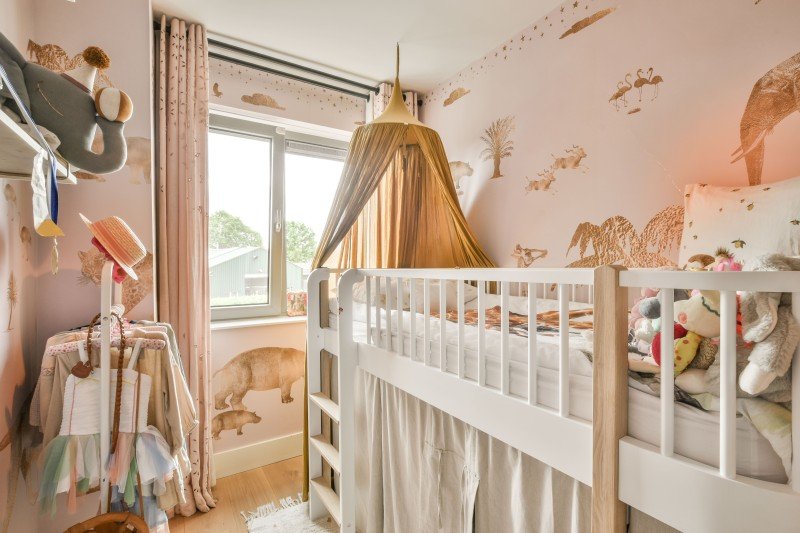This Most Common Bunk Beds Debate It's Not As Black And White As You Think

Exploring Bunk Beds: A Comprehensive Guide
Bunk beds have long been a staple in children's bedrooms, dorms, and even homes with minimal space. Not only do they provide a useful sleeping option, however they also develop a fun and imaginative environment for kids and a great space-saver for adults and families. This short article will check out whatever you require to learn about bunk beds, from types and materials to safety suggestions and buying recommendations.
Tabulation
- Kinds Of Bunk Beds
- Conventional Bunk Beds
- Loft Beds
- Triple Bunk Beds
- L-Shaped Bunk Beds
- Material Options
- Wood
- Metal
- Security Considerations
- Purchasing Guide
- FAQs
Types of Bunk Beds
Bunk beds are available in various designs to match different needs and preferences. Here's a breakdown of the most typical types:
Conventional Bunk Beds
Standard bunks usually feature two beds stacked vertically on top of one another. These beds are perfect for brother or sisters sharing a room or for taking full advantage of sleeping space in guest spaces.
Loft Beds
Loft beds stand likewise to traditional bunk beds however do not have a lower sleeping area. Rather, they often include a desk or seating area below, making them a great choice for small spaces requiring multifunctionality.
Triple Bunk Beds
Triple bunk beds are created for 3 residents, with beds stacked in a three-tier setup. These are less typical however can be a fun solution for big families or pajama parties.
L-Shaped Bunk Beds
With one bed placed horizontally and the other vertically, L-shaped bunk beds are typically geared up with additional features such as desks or storage drawers and can complement corner areas in a space.
Comparison of Bunk Bed Types
| Bed Type | Ideal Use | Description |
|---|---|---|
| Standard | Shared bed rooms or guest rooms | Two beds stacked vertically |
| Loft | Little rooms requiring multi-purpose space | Upper bed with open space underneath |
| Triple | Big households or slumber parties | Three beds stacked vertically |
| L-Shaped | Corner or flexible spaces | A combination of vertical and horizontal beds |
Product Options
Bunk beds are manufactured from different materials, with wood and metal being the most typical. Each product has its pros and cons.
Wood
- Resilience: Generally robust and can stand up to years of use.
- Visual Appeal: Offers a timeless look that can mix with numerous decors.
- Weight Capacity: Typically sturdier; can support heavier weights.
- Drawbacks: May be more pricey than metal options and can be vulnerable to scratches.
Metal
- Strength: Generally light-weight and easy to move however still durable.
- Modern Design: Often is available in smooth designs, making it appealing for modern spaces.
- Economical: Usually less costly than wooden choices.
- Downsides: Can be cold to the touch in winter seasons and may not have the same visual appeal for some purchasers.
Security Considerations
When it comes to bunk beds, security can not be ignored. Here are crucial safety suggestions to bear in mind:
- Guardrails: Ensure that the leading bunk has guardrails on both sides to prevent falls.
- Durable Construction: Check for a solid construct and sturdy materials to hold up against weight and motion.
- Weight Limit: Adhere to the maker's weight limitation for both the upper and lower bunks.
- Ladder Design: Choose bunks with a safe, easy-to-climb ladder and prevent any sharp edges or rungs.
- Age Restrictions: Most makers recommend that children under the age of 6 should not sleep in the upper bunk.
Purchasing Guide
When looking for bunk beds, consider the following elements to find the very best fit for your requirements:
- Space Availability: Measure the space size and ceiling height, making sure there is sufficient space for the top bunk.
- Bed Size: Decide between twin, full, or larger sizes based upon your needs and the size of the space.
- Style Preference: Consider the total decoration of the bedroom to find an ideal design.
- Reduce of Setup: Look for a bunk bed that is simple to put together.
- Spending plan: Bunk beds are available in numerous rate varieties, so identify a spending plan before beginning your search.
Frequently asked questions
1. What is Bunk Bed For Kids suggested age for kids to sleep on the leading bunk?
Kids aged 6 and older are typically advised to sleep on the top bunk to minimize the threat of falls.
2. How can I make my bunk bed more secure?
To enhance safety, guarantee guardrails are appropriately set up and check that the bed is put on a flat surface. Additionally, motivate kids to use the ladder thoroughly.
3. Can I convert a bunk bed into 2 separate beds?
Lots of bunk beds are designed to be convertible. Check the maker's specifications for convertibility features.
4. What accessories are offered for bunk beds?
Common accessories include beddings, storage drawers, staircases rather of ladders, and tented canopies for a fun visual appeal.
5. How do I preserve my bunk bed?
Routine look for loose screws or structural integrity can help make sure security. Dust the bed regularly and clean spills quickly to keep the materials in good condition.
Bunk beds are flexible and a space-efficient option for different living circumstances, from kids's spaces to visitor accommodations. With numerous styles and materials available, prospective buyers have a wealth of choices to think about, guaranteeing a combination of functionality and visual appeals. By prioritizing safety and following the pointers described in this guide, people can discover the right bunk bed that suits their space and lifestyle, all while developing a pleasurable sleeping environment.

